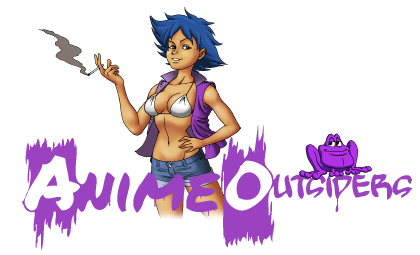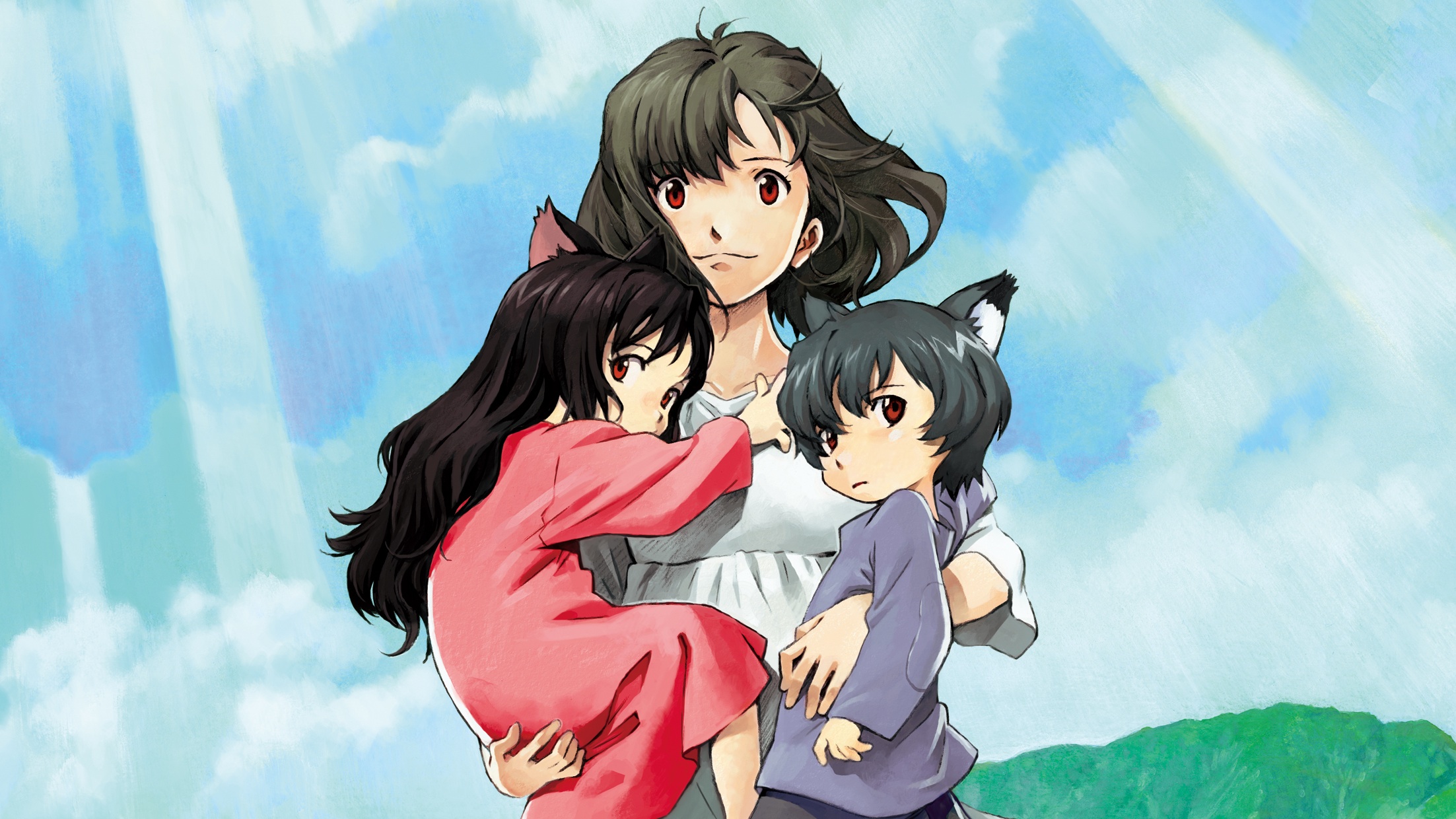Review:
Devilman Crybaby
by Christopher Kinsey
So Rob Zombie and fans of Rob Zombie rejoice, Devilman has a new property since… Wait Devilman never really ended did it? See Go Nagai has enjoyed his original saga so much he’s revamped it, altered universed it, rebooted it, alternate ending-ed it, threw the characters against the Cyborg 009 universe, rule 63ed it and crossover after crossover after crossover kept this series going since 1972.
1972.
It’s hard enough to get American audiences interested in anime that isn’t in the next Japanese television seasons let alone anything that premiered a few years back. But Aniplex and Netflix back a rather young studio in Science SARU to breathe a modern take on this property that has been a staple for decades, I thought it was really foolish. Besides the aforementioned Rob Zombie, his fans, and us geezers what interest could be stirred, what emotion could be ridden to make this a success? Come along, it’s a pretty amazing journey.

Is he strong? Listen bud, he’s got de-o-mon-ic blood”
Let’s start with the plot. If you’ve never heard of Devilman before it’s not a problem. This series comes off as a kind of condensed version of the original plot. Think of it as Dragonball Z Kai as compared to the long running series before it, which is to the series benefit and detriment. Everything starts off to the list of things that have to happen in order to get a Devilman series up and running. Akira Fudo is a timid and good hearted lad who is called upon by his best friend, Ryo Asuka, to help in a quest to prevent the world from being overtaken by demons. As it turns out the only way to reliably kill a demon is with the power of a demon, so in the presence of a drunken sex and violence filled party a pact is reached where Amon is summoned into the body of Akira but Akira’s heart is so kind and good he retains his humanity but gains the power of hell’s Lord of War.

You know…For kids!
Now this is the point where I remind everyone waaaay back in 1972 this was pushed off as the origin story of a super hero story for kids. Go Nagai has always been that special kind of crazy that when told “Push the envelope” he rips up the envelope, sets it on fire, mails it anyway, it arrives on his editors desk AND THE EDITORS APPROVE IT!!! His style and stories gave rise to what we call ecchi manga, he gave the giant robots pilots, made sexy ladies into the protagonists for shonen comic series, then he made another heroine for a shonen series that was a masked hero that wore nothing but a mask, scarf and boots; and created a hero for young kids who’s origin story was to go to a blood/drugs/sex orgy and get super powers from a prince of hell itself.
Now Crybaby isn’t a show for kids. The imagery alone is the stuff of twisted nightmares fueled by sex and violence and that’s kind of the point. Akira and Ryo’s war against the emergence of a demonic threat starts off in what we can consider relatively “normal” anime territory. Our heroes use their wits and powers to fight against the demons while at the same time desperately keeping their secret from friends and loved ones. Now back in the day this meant there was a villain of the week structure when it came to a Devilman series until you get to the grand finale. But with the 10 episode constraint you have to take those gems of ideas in Devilman lore and bring them to the forefront. And this series succeeds in that by making the pivotal moments of the original series more intimate and effecting Akira on a more personal level. Akira’s powers are all in the service of those he cares for, and he learns battle by battle that he cares for everyone. You can sense every struggle he has with violence being his only option, how he keeps his cheer until the very last moment when his personal hope is lost.

I sure hope nothing bad happens to anyone in this picture!
The animation that conveys this tale is a wonder to behold. I don’t see anything like it now of days. I said before that Castlevania has the sense of a Kawajiri production then I would argue that Crybaby takes a lot of it’s surreal fluidity from the more nightmarish moments of a Satoshi Kon production set through a filter made by the surreal bits of Ralph Bakshi. This is an important stylistic note because the team at Science SARU made a fluid, believable world and made the supernatural elements feel really off putting. I would put this team in charge of animating how Lovecraftian descents of madness come about. Series director Masaaki Yuasa is a master at this meld of cartoonish slapstick in a believable world which has been seen in his other works like The Tatami Galaxy and episodes of Space Dandy. All those elements make the final episode a real cluster of odd sensations that bounce you from all those story driven dramas you just watched to the simpler series of before and to straight up moments that mess with your head. It’s great to see.

Of course crisp moments like this are awesome too
This series is hard to talk about in fullness because of several plot elements that require spoilers upon spoilers to talk about and I don’t want to ruin this for anyone who has yet to watch it. But there is a subject that the internet loves to talk about when it comes to this series and it’s about the inclusiveness of it. Discussion since release has been on how inclusive the series is on homosexuality and impressively it does handle this subject matter well, in that it’s not really an issue. A character who is definitively homosexual turns on the heroes towards the end but it’s not because he IS homosexual, it’s just that he was human and had a decision to make. A very reasonable but ultimately bad decision at that in the context of the story. Lesser anime series would have dressed it up as “degenerate habits ruined this kid” stating his homosexuality pushed him to this decision. Many people also have decreed that the characters of Miki and Miko have a thing for each other, but I find that kind of reaching. I can see the argument but would need convincing because you can love a friend, say so, and those word leaving your lips does not make it a declaration of a romantic relationship. Finally is the ultimate ending and revelation of Ryo’s true self which again, I can’t disclose for the sake of spoilers, but I will say this:

Console me, he may not echo my headcanon!
Back at the end of the original manga’s run there was a lot of material put out that seemed to blur the lines of sexuality and gender and what it was to be man, woman or both. Tezuka himself studied such things in several series and as goes Tezuka so goes his students. One such student was Go Nagai. So if you do gain a frame of reference by watching the series the following line is my satement on that relationship will make sense.
He was of both genders the whole time, but that point is irrelevant because, in the end, he lost the one so dear to him. That’s not about “Representation”. That’s poetry. And it works.

But seriously, what the f*** are you Psycho Jenny?
The Pros
-Fluid art style that conveys not just the story well, but the emotion of characters and scenes in an easy to understand way.
-Storyline that keeps the spirit of the past series while giving it not only a modern identity but eliminates a lot of filler that would have bogged the main story down
-The modern “Devilman No Uta”. Go listen to it. On repeat. Endlessly.
The Cons
-There are a lot of in jokes that will be lost on anyone who isn’t a longtime Japanese Devilman fan or Rob Zombie
-Ryo’s “Engrish” in the Japanese dub is something I haven’t seen since the 90s. A masterpiece in bad. *Chef kisses fingers*
-“Devilman No Uta” is now stuck in my head. Again.




